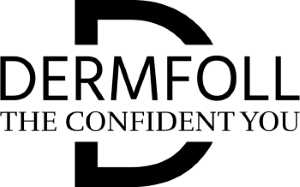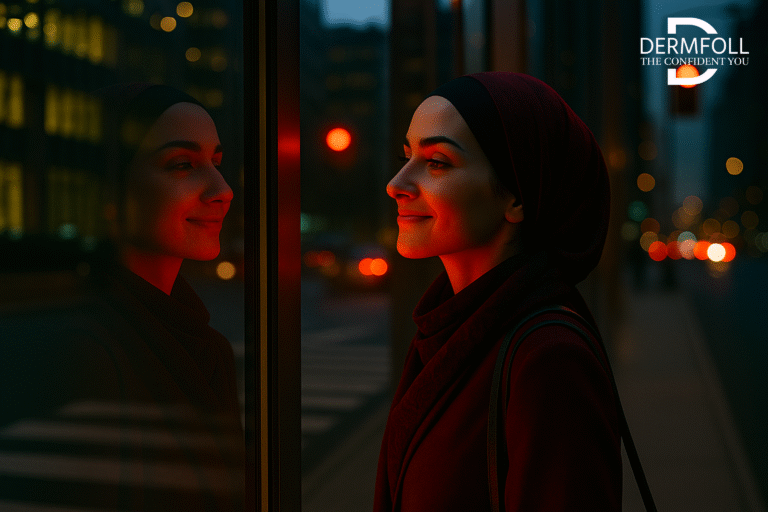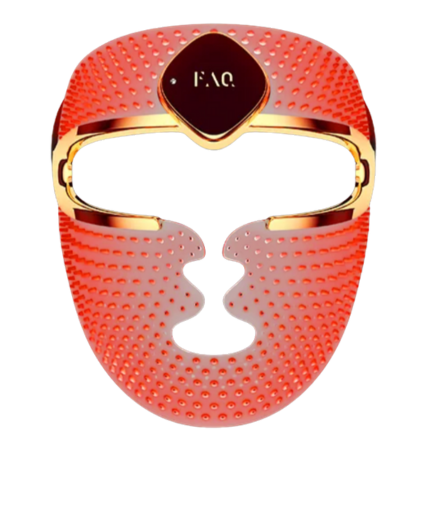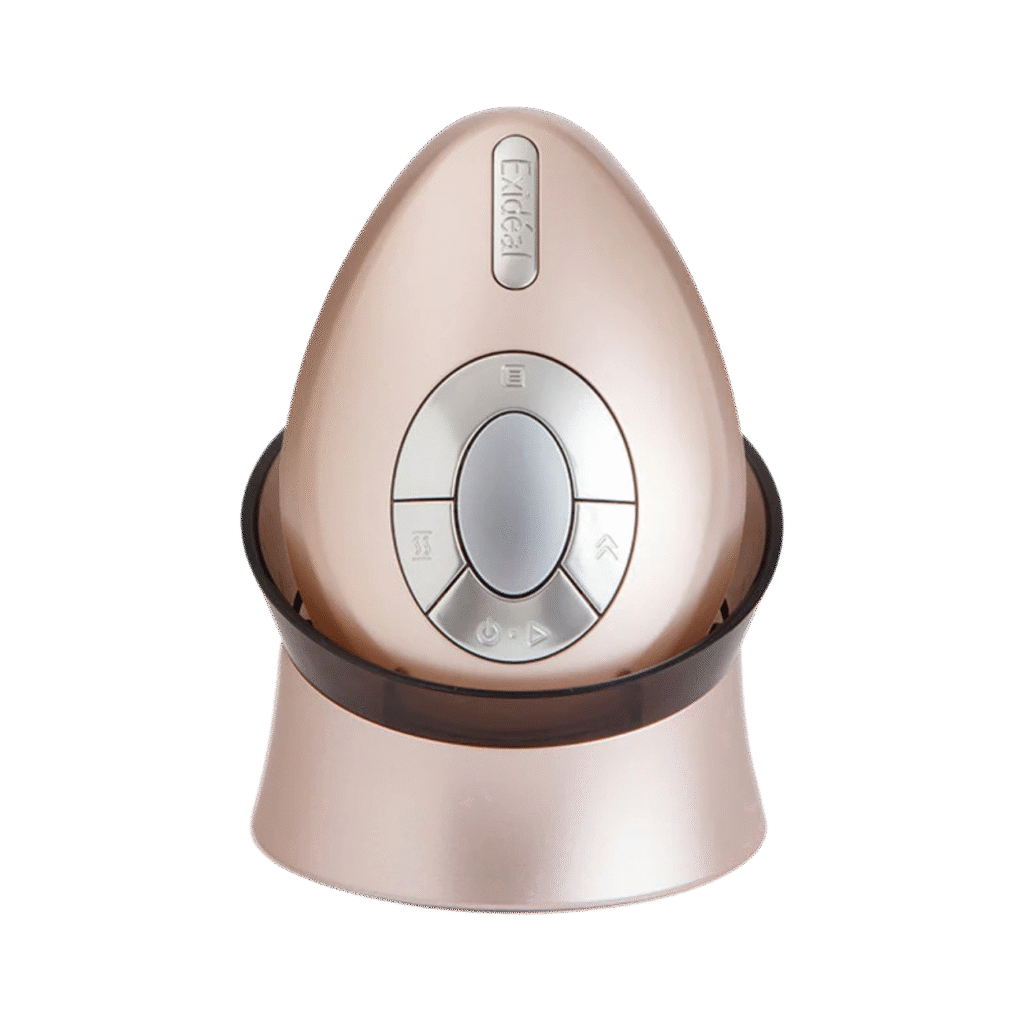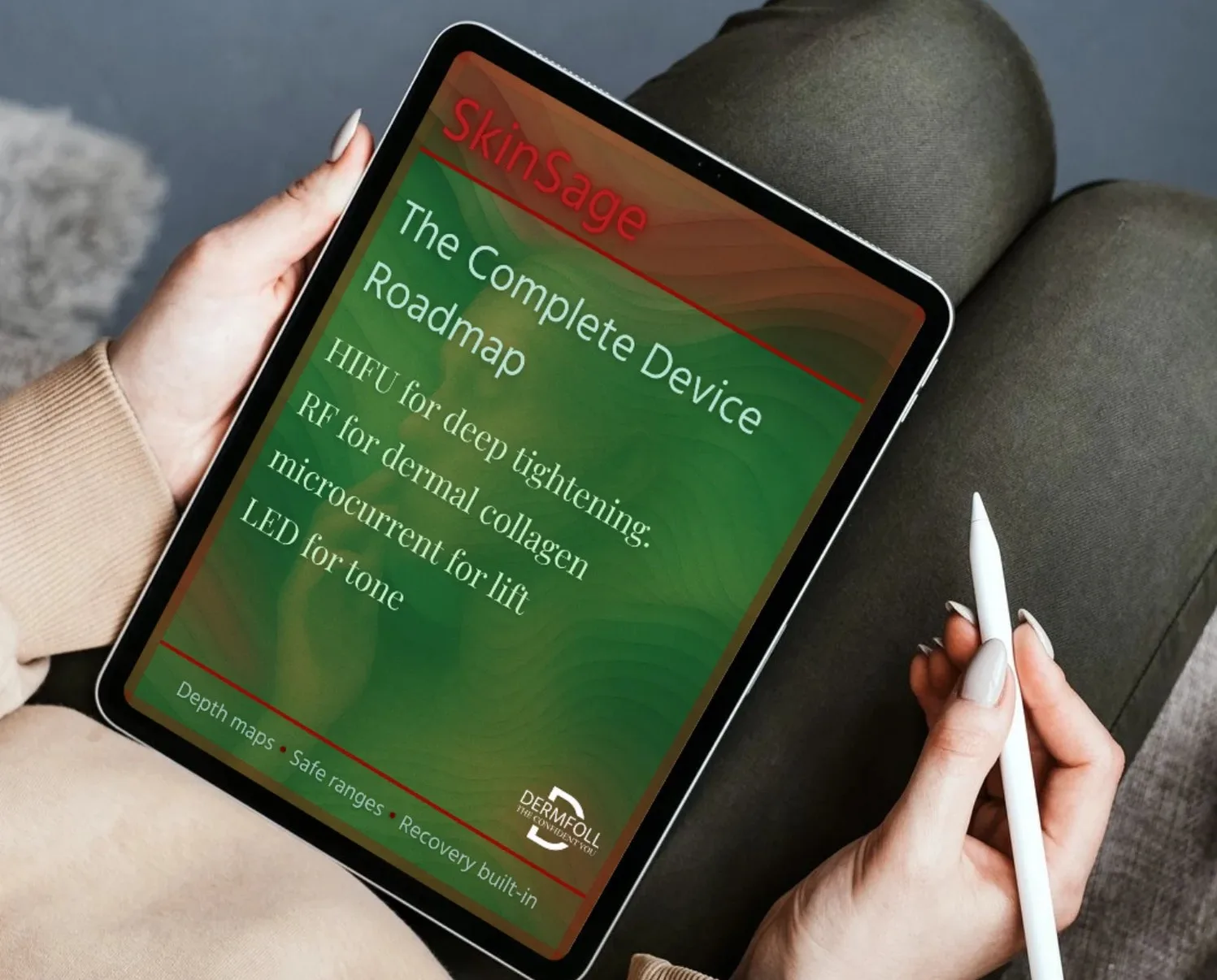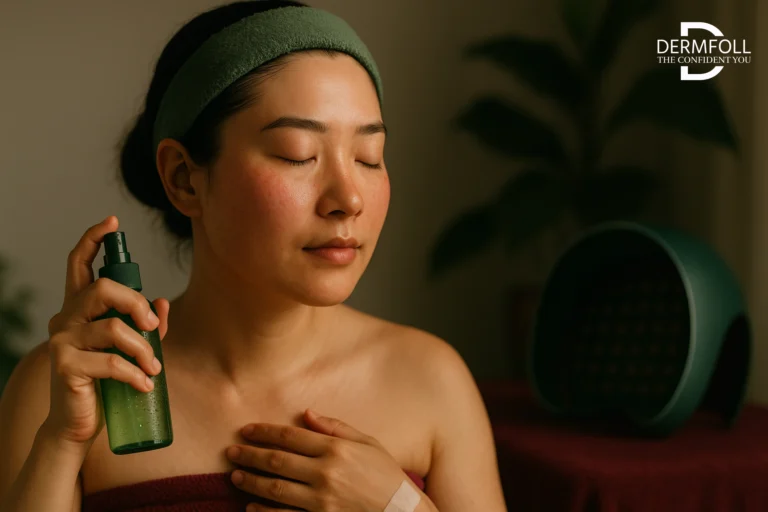What Is Red Light Therapy and How To Start Red Light Therapy?
Alright, let’s start from the beginning, because if you’ve ever seen someone use one of those red-lit masks or devices and thought, Is that really doing anything? We got you.
Many of us are curious about how light, which is so simple, can make skin better.
But here’s the thing: it can and does. The key is the kind of light and the science behind it.
The Fundamentals of Light-Based Skin Treatment
Photobiomodulation is a big word that means employing certain wavelengths of light to change your skin at the cellular level. No heat, no burning, nothing invasive.
It’s based on tech originally developed by NASA (yep, space agency NASA) to help with wound healing. And over the years, dermatologists realized: if this can help skin heal faster, could it also help with aging, inflammation, and even acne? Spoiler: yes, it can.
“PBM is a non-thermal process… triggering beneficial biological responses like ATP production, reduced inflammation, and collagen synthesis.” – Advanced Photobiomodulation in Dermatology
Understanding the 620–660 nm Wavelength Range
Here’s where the red light therapy wavelength for skin comes in. Most of the benefits we’re talking about – things like firmer skin, fewer fine lines, and better healing happen when the device emits light in the 620 to 660 nanometer range.
Why that range? Because that’s how deep the light can go. Not so shallow that it just grazes the surface, and not so deep that it skips the skin entirely.
It’s that sweet spot where collagen-making cells live – and those are the ones we want to reach.
Now, this is important: a LED skincare device needs to emit actual red wavelengths – not just look red. Some cheaper options just use red-colored bulbs without the therapeutic spectrum. So always check the specs before buying.
How Light Interacts with Skin Cells at the Molecular Level
Let’s zoom in a bit – down to the cellular level.
When red light hits your skin, it’s absorbed by something inside your cells called cytochrome c oxidase. Think of this as the spark plug in your skin cell’s engine. When it’s activated, it helps produce more ATP – which is your cell’s version of energy.
That little energy boost kicks off a chain of helpful reactions: more collagen, better repair, less inflammation. And over time, that’s what leads to smoother texture, stronger skin, and even a calmer, more even tone.
“This absorption significantly increases the production of Adenosine Triphosphate (ATP)… fueling skin repair and regeneration.” – Advanced Photobiomodulation in Dermatology
So yeah, it’s light – but it’s deeply biological too.
Still wondering if this fits into your skincare lineup or just sounds cool on paper? Let’s get into the real-life benefits.
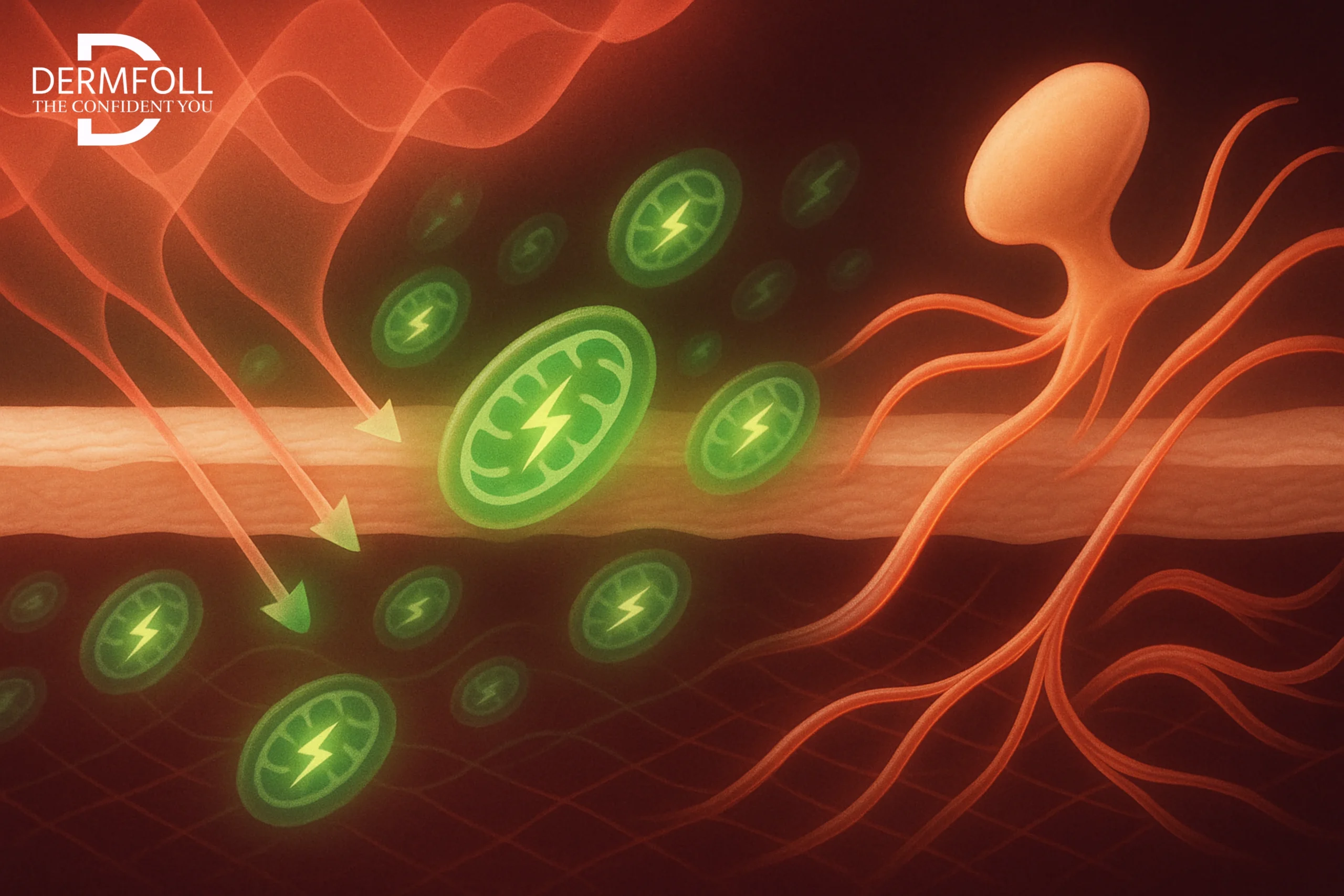
The Real Science Behind the Glow
So you’ve heard the hype about red light therapy – maybe from a friend, a TikTok deep dive, or even your dermatologist. But why does it actually work?
Let’s break it down.
The Path from Light to Collagen: Anti-Aging Explained Simply
Now let’s talk about collagen, because this is where red light really shines. When that increased ATP gets flowing, it doesn’t just stop at energy production. It also triggers certain genes that tell your fibroblasts (those collagen-producing cells) to get to work.
What’s the result? More collagen and elastin, which means firmer, smoother, and more elastic skin over time.
According to one clinical paper,
“Red light in the 633 nm range significantly stimulated collagen synthesis and extracellular matrix remodeling in aging skin fibroblasts” .
This is why many skin Enthusiasts and professionals turn to red light therapy for wrinkle reduction and texture improvement – and also why consistency is key. You’re building something under the surface, one session at a time.
The Skin Benefits of Red Light: What Science Actually Supports
Okay, let’s get real about what red light therapy actually does. You’ve probably seen the glowing masks or heard influencers throw around words like “collagen,” “glow-up,” or “post-facial bounce.” But let’s cut the noise and look at what’s been clinically validated.
Red light has made its way from high-tech clinics to handheld LED skincare devices, and the reason is simple: it works—when you use it right.
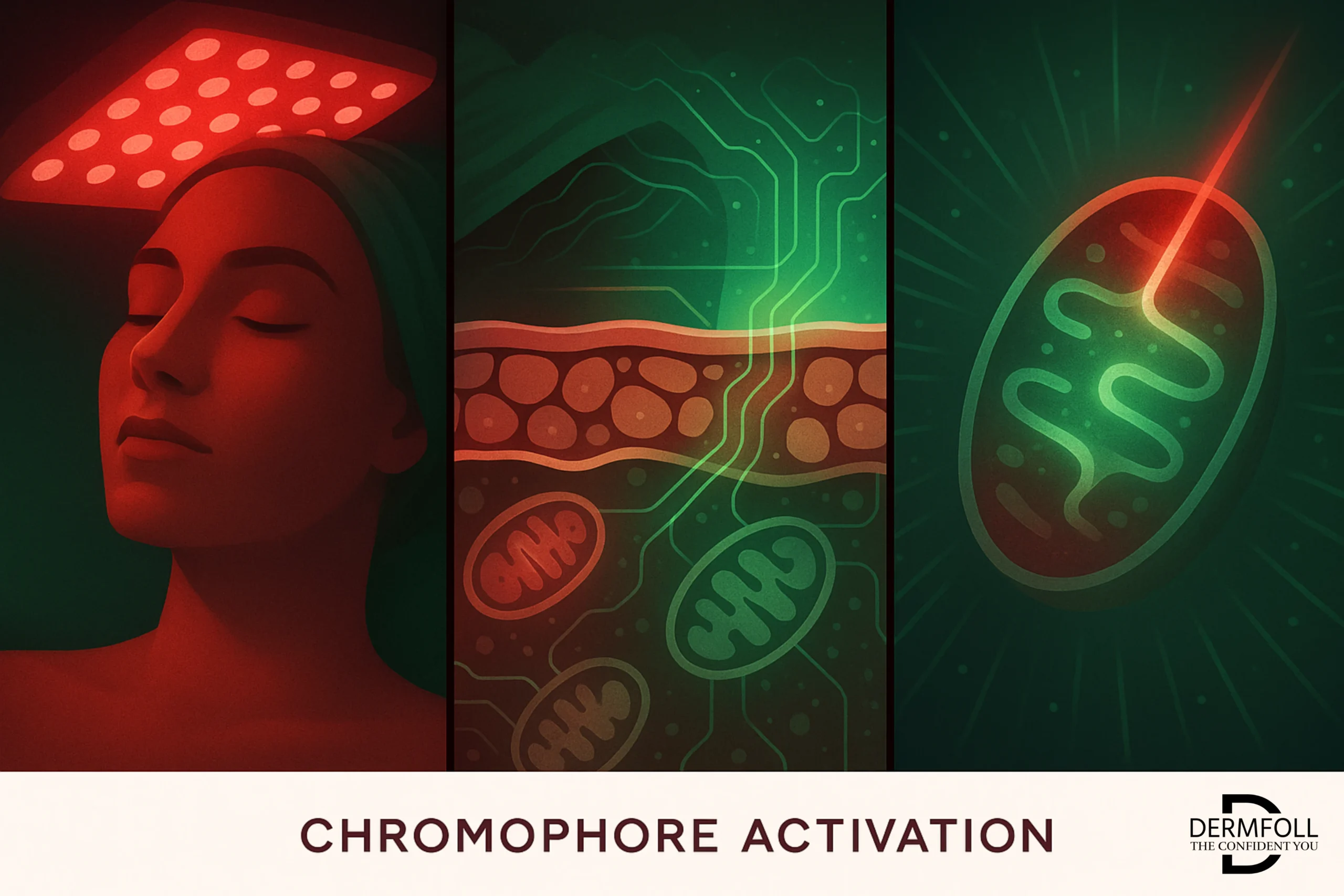
What Red Light Really Does for Wrinkles
Red light (around 620–660 nm) penetrates deeper than most other light colors. When it gets down there, it wakes up your fibroblasts – those are the little worker cells responsible for making collagen and elastin. That’s your skin’s scaffolding. With age, those workers go a bit lazy. Red light gives them a gentle but firm nudge to get back to it.
And we’ve got data to back that up.
“Red and near-infrared wavelengths are proven to stimulate dermal fibroblast activity, enhance mitochondrial function, and improve tissue resilience in aging skin.” — Clinical Dermatology Reference, 2023
✅ One study found that patients treated with red light therapy showed a 42% increase in skin elasticity and a 38% reduction in wrinkle depth over 12 weeks.
So yes, it’s more than just hype. It’s energy meeting biology.
Texture, Tone, Glow: What Changes You Can Realistically Expect
Okay, what if your goal isn’t just wrinkle reduction, but an overall glow-up?
With consistent use of a LED skincare device, red light can help even out skin tone, improve hydration, and make your skin feel… well, a bit more alive.
In clinical terms, this is due to improved microcirculation and cellular energy production. Your skin gets better at doing what it’s supposed to: regenerating.
“Light-induced ATP synthesis enhances cellular performance and accelerates regeneration at both the epidermal and dermal levels.” — Handbook of Cosmetic Science & Technology
Takeaway: You won’t see overnight miracles, but over 6–8 weeks, you can expect smoother texture, brighter tone, and that elusive “lit-from-within” glow.
Redness, Scarring, and Sensitivity: How Red Light Supports Healing
We often associate skincare with appearance, but healing is just as important. Red light therapy shines (literally) when it comes to post-procedure recovery, calming inflammation, and improving wound repair.
Let’s break it down a bit further.
🔴 Redness
If your skin gets red or reactive easily – think rosacea, post-treatment flushing, or even sun exposure – red light can help dial it down. It works by decreasing pro-inflammatory cytokines, which are the skin’s Fire fighters.
📌 In a randomized clinical trial, red light use reduced visible erythema (redness) by 24–28% after just four sessions.
“LED-induced modulation of inflammatory pathways contributes to improved skin tolerance and enhanced barrier function.” — Clinical Dermatology Handbook
🟤 Scarring
Now, if you’ve ever had a breakout that left a mark, or a procedure that didn’t quite heal evenly – this is where red light becomes your skin’s little support crew.
It encourages matrix remodeling, meaning it tells your body to rework that damaged collagen and replace it with something smoother, more aligned. Over time, that can soften scar texture and fade discoloration.
📌 In clinical studies, patients with mild to moderate acne scarring saw up to 35% improvement in surface smoothness after 8 weeks of red light treatment.
🧴 Sensitivity
If your skin flinches at everything – fragrance, acid toners, a light breeze – red light might help rebuild your skin’s barrier function.
When your skin’s barrier function is weak, everything gets in and causes chaos. Red light boosts cell renewal and barrier lipids, helping calm reactivity.
📌 Research shows red light boosts epidermal repair rates by 30–40%, especially in skin with compromised integrity.
“Red light therapy promotes skin barrier recovery and modulates inflammation, particularly in sensitive or post-treatment skin.”
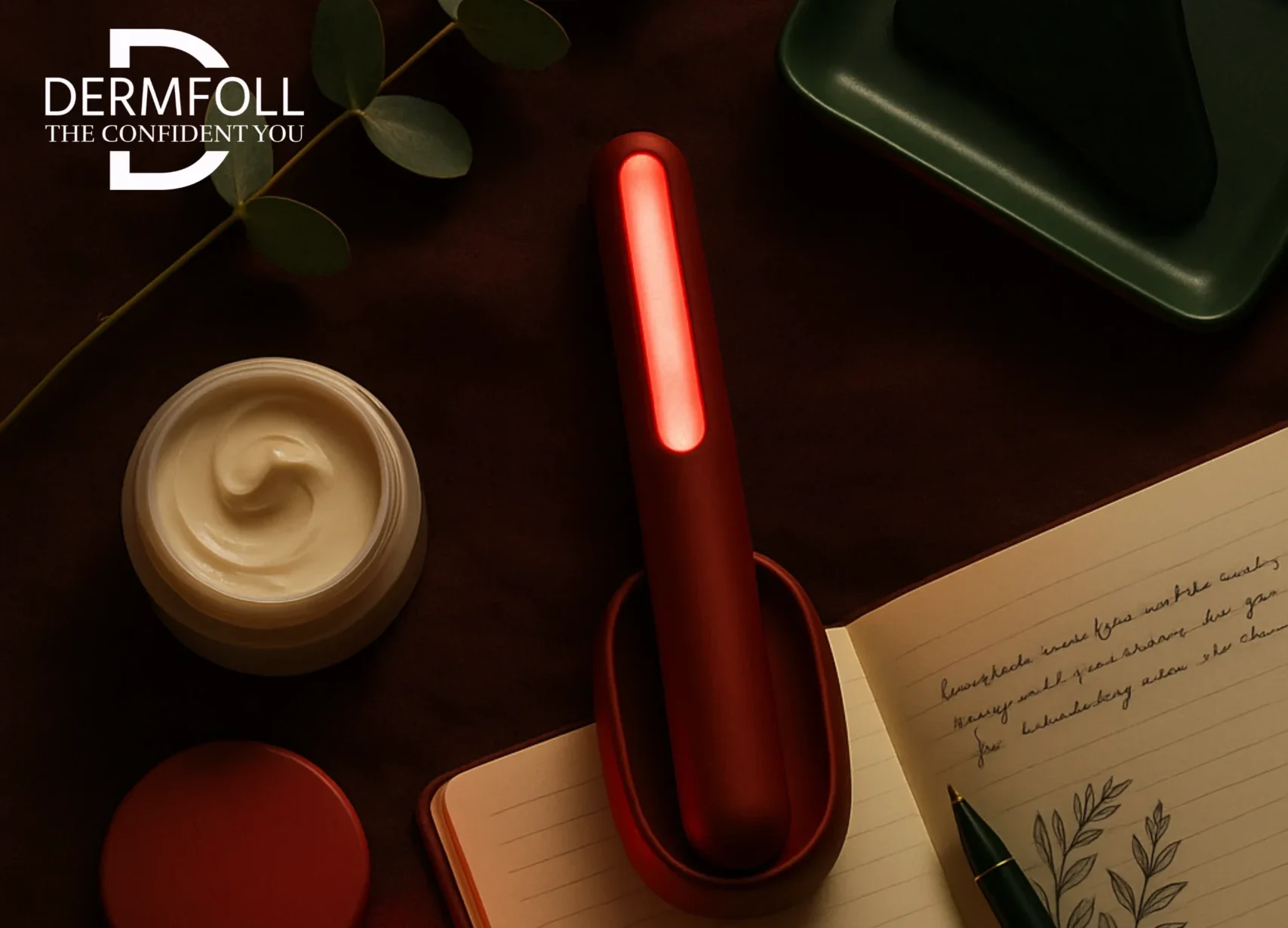
Device Recommendations: At-Home Red Light Tools
FOREO FAQ™ 202 Anti-Aging Silicone LED Mask
Let’s talk about one of the most popular LED skincare device options for home use: the FOREO FAQ™ 202 Anti-Aging Silicone LED Mask. If you’ve been wondering how to start red light therapy, this mask is a friendly entry point.
“PBM is a non-thermal process triggering beneficial biological responses like ATP production, reduced inflammation, and collagen synthesis.”
I know it can feel a bit sci-fi to strap on a glowing mask, but think of it like giving your skin a gentle power-nap under a warm, nourishing light.
What It Is
- It’s a hands-free, full-face silicone mask that delivers therapeutic red light (around 633 nm).
- It brings FDA-cleared at-home phototherapy into your routine.
Key Features
- Medical-grade silicone ensures the light wraps evenly around every contour.
- Quick sessions: 90 seconds, three times a week – perfect for busy days.
- Rechargeable and splash-proof, so you can even use it in your bathroom spa moments.
Benefits & Use Tips
- Targets fine lines and firms skin by bathing it in uniform red light.
- After your session, pair it with a hydrating serum (but apply after, not under, to let the light penetrate best).
- Wipe it down with mild soap after each use to keep that silicone soft and bacteria-free.
Next up, we’ll dive into another favorite – the EXIDEAL OVO Glowing Egg – so you can see how spot-treatment tools fit alongside a mask.
EXIDEAL OVO Glowing Egg
Next on our list is a compact LED skincare device that’s all about precision: the EXIDEAL OVO Glowing Egg. If you’re exploring how to start red light therapy beyond a full-face mask, this little tool is your go-to for spot treatments.
“Near-infrared light penetrates deep into tissues, promoting blood circulation and cellular repair.”
Think of it as a mini flashlight for your skin—tackling fine lines or scars exactly where you need it.
What It Is
- A handheld, egg-shaped device that blends red light (630 nm) with near-IR (830 nm).
- Designed for portable, targeted treatments – you choose the spot, it does the work.
Key Features
- Dual-wavelength output: red light to kickstart collagen, near-infrared to soothe and repair deeper layers.
- 10-minute auto-shutoff: no timer watching – just set it and relax.
- Ergonomic, travel-ready: USB-C charging and lightweight, so you can bring it on the go.
Benefits & Use Tips
- Precision: perfect for delicate areas – think crow’s-feet, laugh lines, or stubborn scars.
- How to apply: start on clean, dry skin, then glide it in slow, small circles – like you’re gently drawing rings around each concern.
- Seal the deal: finish with a peptide-rich moisturizer to lock in all that extra repair energy.
Now, we’ve covered both a full-face mask and a spot-treating egg. Ready to see which one fits into your routine first?

Layering Protocol: Light + Lock for Maximum Results
“Right after red light, your skin’s like a sponge—ready to soak up every good thing you put on it.”
Okay, let’s walk through how to start red light therapy in a way that feels more like a mini spa ritual than a science experiment.
You’ve picked either the FOREO FAQ™ 202 Anti-Aging Silicone LED Mask or the EXIDEAL OVO Glowing Egg – now, here’s how to pair your session with the perfect follow-up.
Begin with Your Red-Light Session
Choose your tool
- FOREO FAQ™ 201 for a full-face, hands-free glow-up.
- EXIDEAL OVO Glowing Egg when you want to zero in on fine lines or spots.
Set your timer
- 90 seconds under the mask.
- 10 minutes with the egg.
Repeat
- Do this 3 to 5 times a week to really see those benefits build over time.
Step 1 – Antioxidant Prep
Why now? Your skin’s just had an energizing light boost – think of it like fresh ground coffee waking up your cells.
Antioxidants swoop in to calm any redness and neutralize free radicals before they throw a party you don’t want.
Your pick: Murad Vita-C Glycolic Serum (10–15% gold-stabilized L-ascorbic acid).
How to apply:
- Pat 1–2 drops over face and neck right away.
- Imagine each drop settling in to protect and soothe.
Step 2 – Deep Hydration Boost
“Hyaluronic acid can hold up to 1,000 times its weight in water, plumping skin from the inside out.”
Now that your skin’s prepped and protected, it’s thirsty for moisture. Think of this like laying down a nourishing blanket over all that fresh energy.
- Why next? Those hydrating molecules lock in water and give your newly remodeled collagen the support it needs to stay plump and springy.
- What to use: RéVive Moisturizing Renewal Hydrogel (the “4D Hydration Serum”).
- How to apply: While your skin is still slightly damp, smooth a pea-sized amount over your face and neck. Let it glide on like silk – no need to rush.
Step 3 – Targeted Peptide Power
“Palmitoyl pentapeptide-4 boosts collagen types I and III, helping skin bounce back with firmness.”
Alright, you’ve sealed in hydration – now it’s time for precision repair. Peptides are like little messengers, telling your cells exactly where to rebuild.
- Why now? On primed, hydrated skin, peptides can slip deeper and really fire up those fibroblasts, softening lines right where you need it.
- What to use: Murad Targeted Wrinkle Corrector (a palmitoyl-linked peptide complex with micro-fillers).
- How to apply: Dot onto crow’s-feet, smile lines, or any “trouble zone,” then gently massage in small circles until it disappears.
Step 4 – Seal & Shield
You’ve given your skin a feast of light and actives. Now, let’s tuck it in safely.
- Morning finish: After your peptide step, smooth on your usual moisturizer. Then, don’t skip a broad-spectrum SPF – it’s the best guard against UV stress and keeps those fresh gains intact.
- Night option: On evenings when you’re skipping the red-light session, just follow your peptide step with a nourishing moisturizer. Let your skin absorb and repair while you sleep.
Track Your Progress
“Consistency turns good skin days into a great skin lifestyle.”
Building healthy skin is like tending a garden – you water, you nourish, and you watch it bloom.
- Routine rhythm: Aim for 3–5 light sessions a week, always layering your serums right after. On non-light nights, feel free to dot on that Murad Targeted Wrinkle Corrector for extra peptide love.
- Watch for results: Give yourself 6–8 weeks. You’ll start seeing smoother texture, noticeable firmness, and less redness. Pro tip: snap a quick selfie each week so you can actually track your glow-up.
CONCLUSION
And there you have it, a simple, friendly roadmap for how to start red light therapy at home. You’ve got the lowdown on why 620–660 nm red light works its magic, two top-tier LED skincare devices to choose from, and a “light + lock” routine that’s easy to follow.
Give yourself 3–5 sessions a week, layer in your Murad and RéVive favorites right after, and don’t forget the SPF in the morning. In about 6–8 weeks, you’ll notice firmer, smoother skin with a healthy glow.
Now… what about the part everyone always asks me: How often do I actually have to use it to see results?
Glad you asked. That’s exactly where we’re headed next: how often is red light therapy recommended, and how to make it fit into your life without turning your routine into a full-time job.
